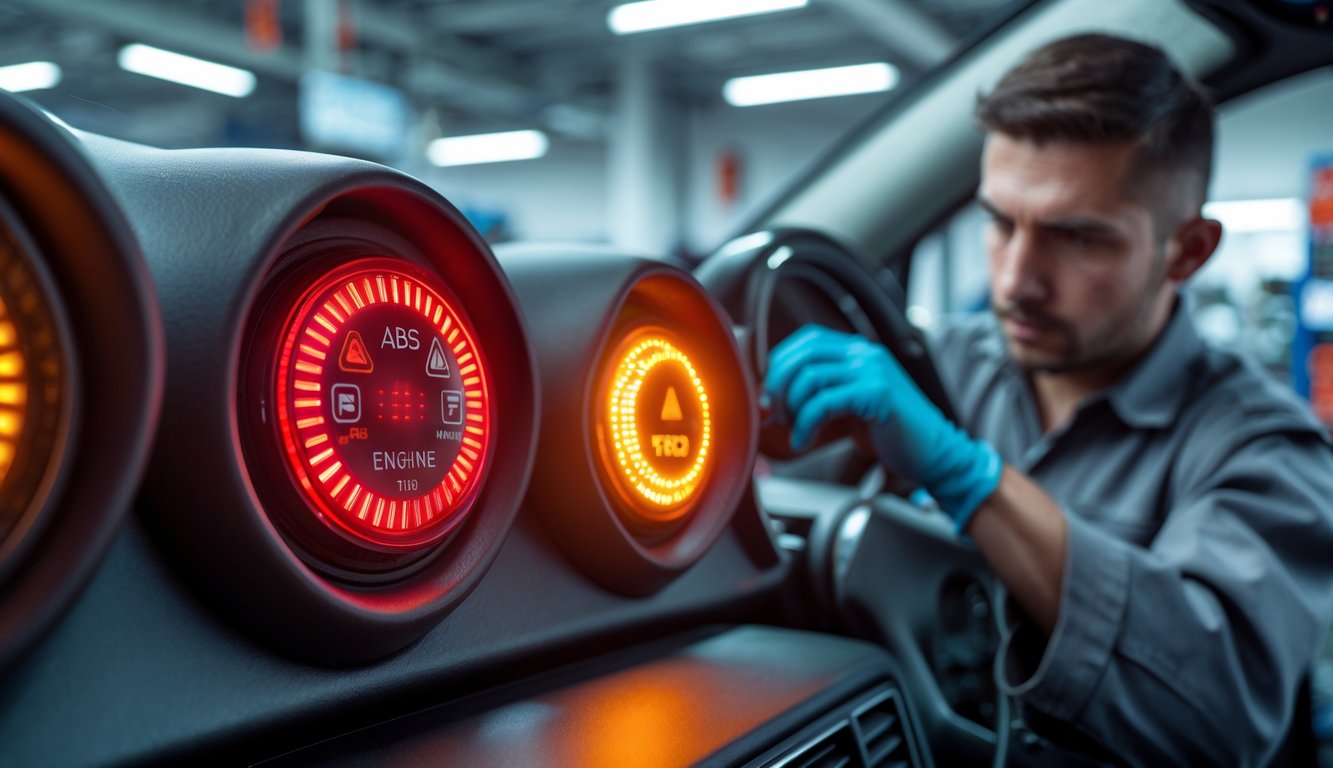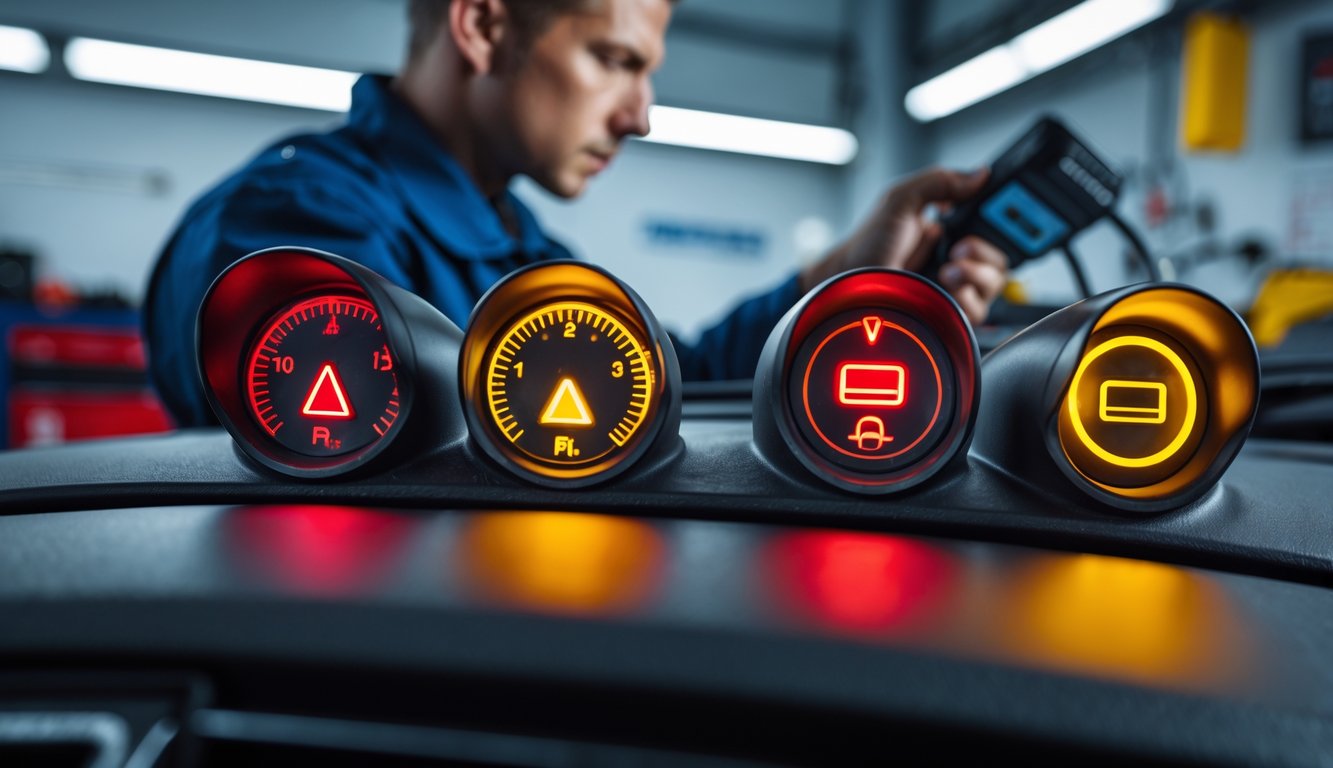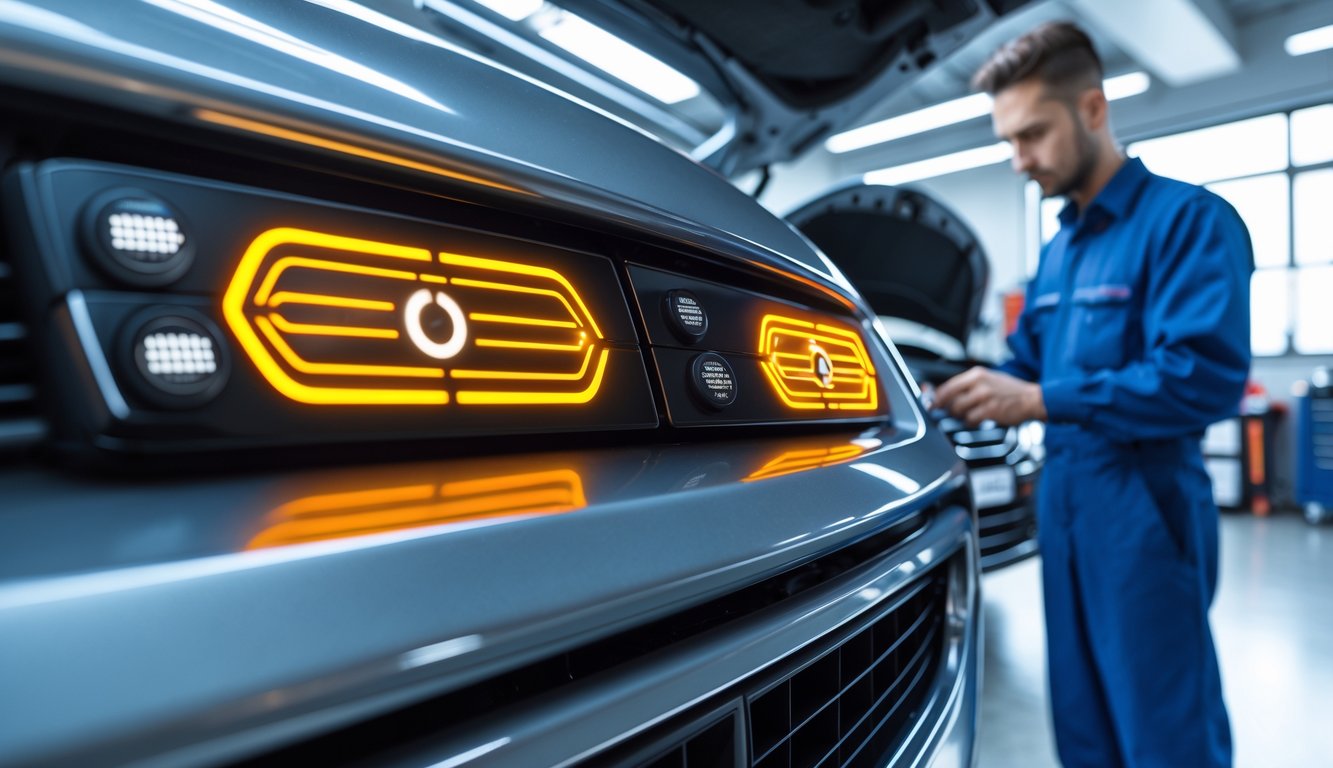
Brake and ABS Warning Lights

Dashboard lights for brakes and ABS? Instant mood killer. One minute, it’s just the ABS flickering, next, the brake warning pops up, I spill coffee, and remember the last time low brake fluid mixed with road salt. Complete disaster. Every flicker or combo means something, and it’s rarely ever simple.
ABS Warning Light Patterns
ABS warnings? Always show up at the worst time—like, right before a trip, or while you’re parallel parking and can’t remember if you read the manual. I once washed the car, got the ABS light blinking, and spent hours chasing wet connectors. Sometimes it’s just a ground wire corroded somewhere dumb. Bosch ABS modules, for whatever reason, usually fail in the module, not the sensors. Why? No clue.
Sometimes the ABS light just sits there, solid yellow. Sometimes it flashes, especially when traction control joins in. That’s when I start digging for the OBD-II reader and wish I’d skipped the extra-large coffee. Met a tech in Dallas who diagnosed ABS by listening for relay clicks—like, with his ear. He said 70% of ABS triggers are just sensor gunk or corrosion. That’s both good and annoying.
Brake System and Worn Brake Pad Indicators
Nobody warns you that the brake system light will pop up the same day you scuff new sneakers. Coincidence? Probably. That “BRAKE” light doesn’t explain itself—could be pads, rotors, or just a random switch. Worn pads have a metal tab that screeches before the light even bothers to show. Actual noise as a warning—so old-school.
Modern cars double up on warnings. If ABS and brake lights both show, it’s almost always thin pads or low pressure. Read the dealer paperwork—it’s boring, but it’s all in there. Once I saw a brake warning from a chewed sensor wire. Squirrels. Not kidding.
Low Brake Fluid Level and Parking Brake Warnings
Low brake fluid? Not glamorous, but it loves drama. Brown fluid just a bit below “MIN” and the car’s screaming. I used to top off with whatever DOT 3 I found, but DOT 4’s better if you drive mountains. Once had a spongy pedal that wouldn’t go away—manual was no help.
Parking brake warning? Red, stubborn, and lights up if you even look at the lever funny. Those little microswitches inside are so sensitive. Combine that with low fluid and you get weird warning combos. Insurance agents freak out if you say “all brake lights on,” so now I take photos for proof. Feels ridiculous, but it works.
Battery and Electrical System Warnings

Ever rush out the door, jam the key in, and bam—battery light’s on. No warning, just instant stress. My phone dies, whatever; my car dies, now I’m calling in late. Apparently, battery failures cause around 20% of roadside calls. Mechanics see it all the time.
Battery Warning Light Triggers
That little battery icon? Total liar. It’ll light up for a dozen reasons: maybe it’s the battery, maybe it’s a corroded terminal, maybe the alternator’s just being lazy. ASE techs say about a third of battery lights come from charging circuit failures—not the battery itself.
Last winter, mine blinked on, then headlights dimmed, radio glitched, seat warmers died. O’Reilly’s guy checked it, said “replace alternator.” So much for my battery theory. Unlike check engine lights, this one means business—if it’s on while driving, something’s dying now. Sometimes it’s just a loose belt. $23 and a scraped knuckle later, fixed.
Manuals warn about wiring, but who checks battery cables for tightness or corrosion unless forced? Not me. Whining noise? Sometimes that’s the alternator regulator losing its mind. It’s never just the battery.
Alternator and Charging System Concerns
Ask anyone who’s left work at midnight to a dead car: alternator problems don’t announce themselves. Battery warning’s one clue, but by that point, the alternator’s already failing. Voltage drops, sometimes spikes, and both kill batteries fast. Bosch engineers told Motor Trend alternators should run near 14 volts. Drops under 12? Bad news.
Symptoms? Power windows slow, dash lights flicker, radio cuts out. Some shops charge $170 to “diagnose” the charging system, then just clean a ground cable and call it fixed. Burning plastic smell? Alternator’s probably melting itself. Shut it down, or risk frying everything.
Old-school trick: check voltage drop with everything on—headlights, AC, defroster. More than 0.4 volts between alternator and battery? Probably bad diodes or wiring. Swapping batteries just delays the inevitable if the alternator’s done. But who carries a multimeter in their glove box? Not me.
Transmission and Power Steering Alerts

Does anyone actually watch for transmission or steering warnings? I barely do. Last week, ignored the transmission temp light, then saw smoke two blocks later. Guess what? Smoke isn’t character. Dealers and rebuild shops love when you ignore these warnings.
Transmission Temperature Warning Patterns
Transmission temp light? Not just decoration. If it starts flickering or stays on, you’re risking cooked fluid. ASE mechanic I know says over 20% of transmission failures start with ignored temp warnings (NHTSA bulletin 2022-34B, if you care). Sometimes the warning pops up out of nowhere, not even a slow build.
I’ve seen techs keep scan tools on standby because by the time the dashboard light glows, damage is already happening. Hot transmissions leak fluid faster, and then clutches fry themselves. Fancy fluids and flush kits help, but nothing beats just paying attention. Sometimes I wish cars had sirens, not lights—maybe people would actually notice.
Power Steering Problem Indicators
So, the power steering warning light—sometimes orange, sometimes a weird hieroglyph—shows up and I’m immediately annoyed. Why do car makers think we’re all fluent in dashboard emoji? I remember turning the wheel once and it fought back like I was arm-wrestling a cinder block underwater. Later, I saw a Ford tech online mocking people for driving until the EPS (electronic power steering) totally dies just because the light’s not red. As if color coding is some universal safety language. Who decided that?
When that light pops up, it’s probably low steering fluid, a dying pump, or the EPS module just throwing a tantrum. CarMD’s 2023 reliability report says, what, 12% of EPS repairs started with people just ignoring the light, or literally putting tape over it? That’s not even a joke. I’d rather do a quick pressure check and listen for weird whines or groans—takes five minutes, way better than praying to the YouTube gods or hoping a software update will magically fix it. Power steering can act totally normal at low speed and then, boom, locks up mid-turn at a stoplight. No warning, nothing. Waiting for a “clear” sign is like waiting for a polite email from your cable company—it’s not happening.
